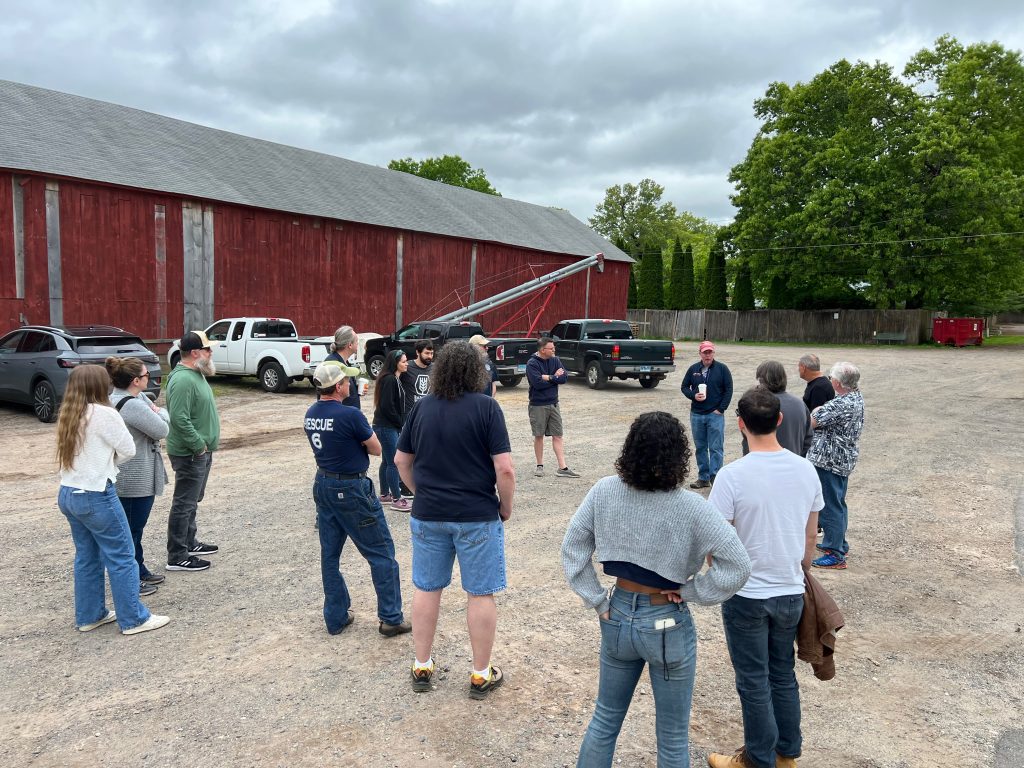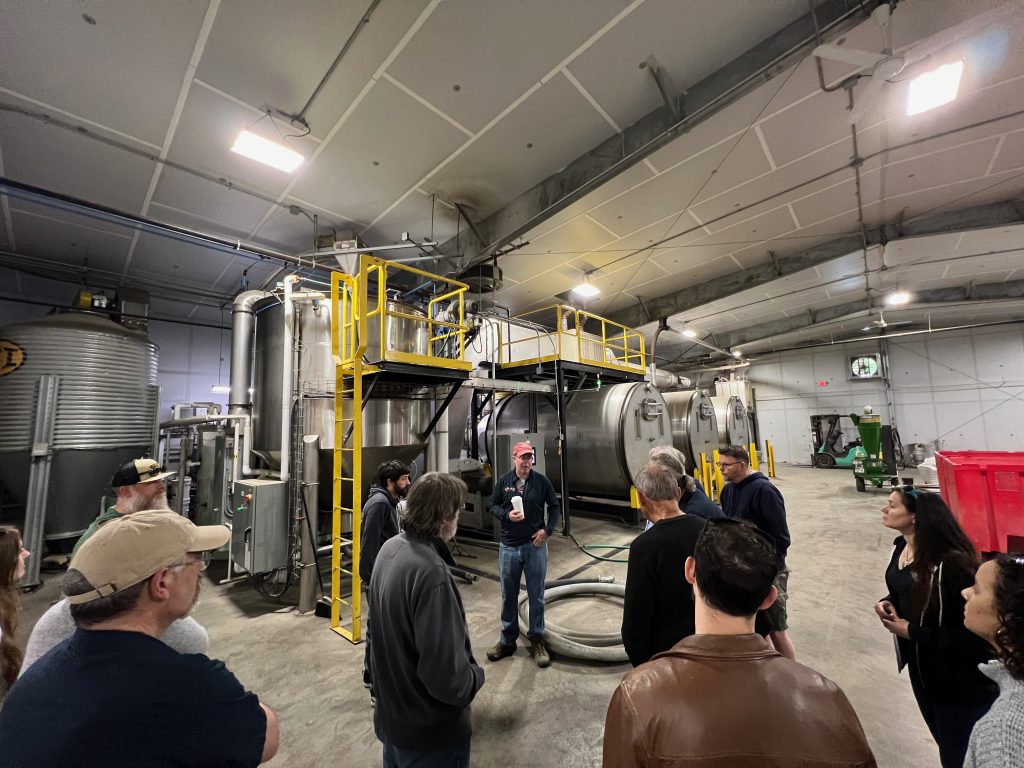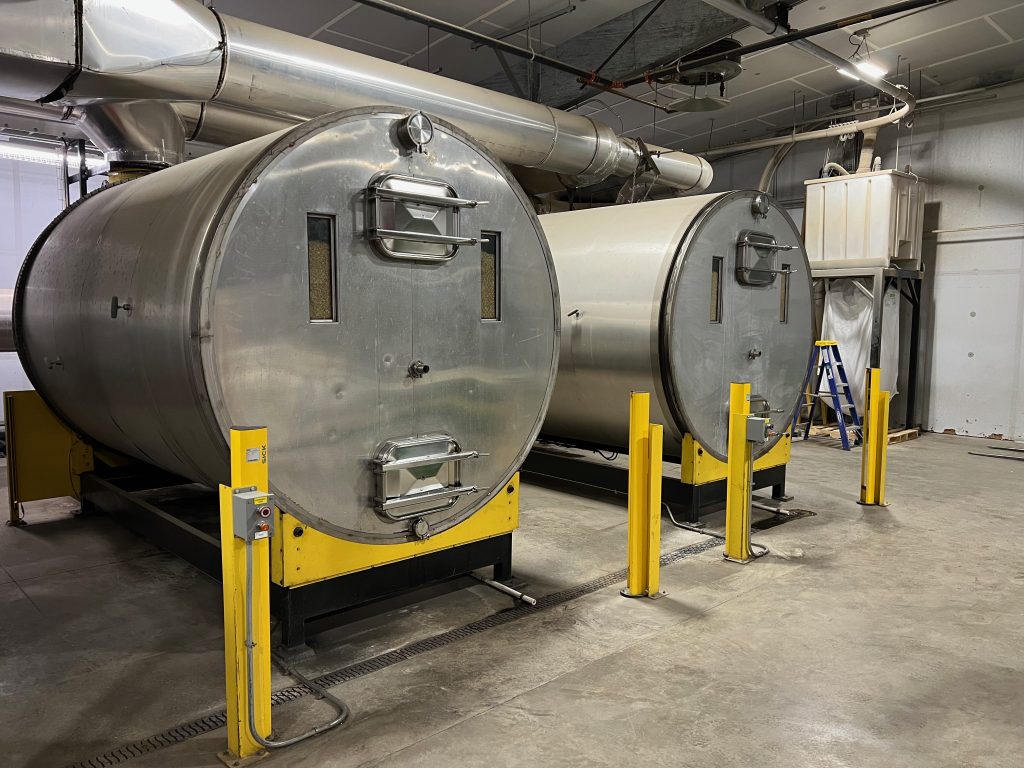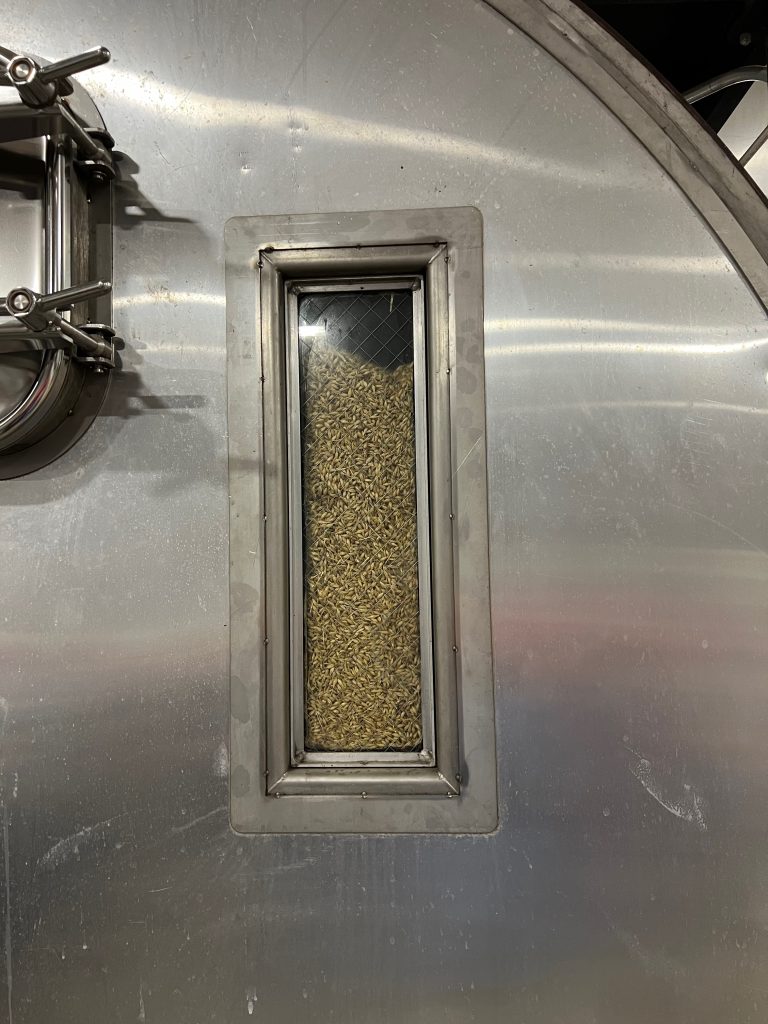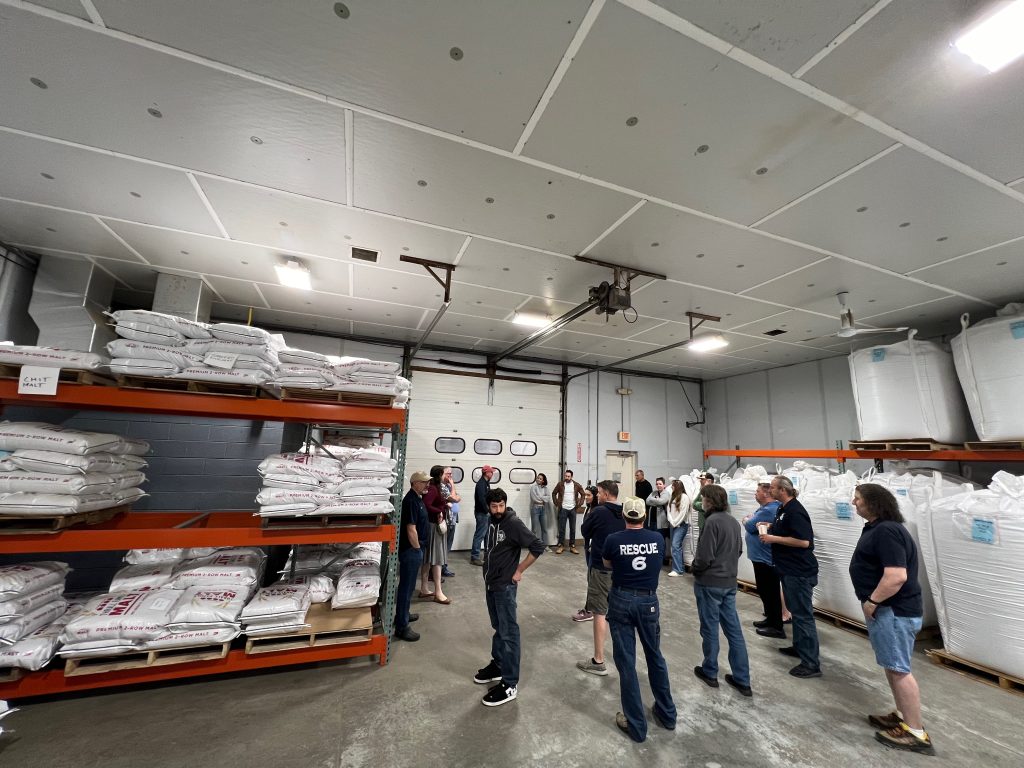Co-written by Pierre Margraff
As the club began gauging interest in a group grain purchase from local malt company Thrall Family Malt, Steve Victor brought up the idea of pairing our purchase with a tour of the facilities, so that we could all learn more about how one of beer’s most important ingredients is produced. Spencer gladly obliged, and I think all would agree that the experience and knowledge shared made the trek to Windsor worth the drive!
After a surprising large number of members and new faces arrived, Spencer Thrall greeted us in the parking lot and the started the visit with an explanation of the growing process. Though the Thrall family, which can trace its farming roots in Connecticut back to the mid-1600’s, is probably best known for their tobacco growing, Spencer and his family began the malting project in 2017. Thrall have been on that land long enough to have their family name on the street, something you just don’t see anymore. Pride of both the farming and malting profession reflects in all aspect of the operation. Rotating crops across their fields between tobacco, cover crops such as soybeans, and grains for malting, has allowed the farm to diversify their offerings and keep the soil fertile. Thrall has over 1,000 acres of farmland, and produces over 750 tons of malted grain each year!
After taking great care throughout the growing process, the grains are cleaned and dried for storage, first processed through a mechanical drum to remove small stones, pieces of the stalk, and any other unnecessary material, before being cleaned of dust and other debris through the use of air. Grain is stored in large silos until it is ready to be malted.
The malting process begins when the dried grains are rehydrated by soaking, typically requiring three separate cycles of water over the course of two days (though huskless malts like wheat and rye can often take only a day). A computer with the company logo handles the cereal hydrator and aerator, one of the many critical components of the process. Spencer shared that this is the most important part of the process – any mistakes made here cannot be fixed. It’s a fine line; you need a high enough hydration percentage (about 44%) to ensure full modification, but you also need to avoid “drowning” the malt.
Once hydrated, the grains are pumped to the germination tanks (which become kilns in the next step of the process – more on that later!). While the tanks are relatively small for the size of their operation, allowing for approximately 3 tons of grain per batch, Thrall has three separate horizontal rotating drums for germination and kilning, where many malting companies would opt for a single tank. This allows Thrall to be able to provide a surprisingly broad portfolio of malts that other small malting operations cannot offer. The germination stage takes between 3-7 days, typically falling into the 5-6 day range. Longer germination leads to higher conversion, but lower starch levels. The control their system offers allows for precise temperature, moisture levels, and rotation to ensure they produce consistent, well-modified malts.
The kilning process is quick, relative to the other steps in the process. The same tanks used for germination are now heated by natural gas to kiln the grains into the malts that we use to produce beer. Time and temperature are key here, allowing Spencer to use the same grain to produce a variety of different finished malts. A malt like their pilsner malt (aptly named Pils Malt) will take more time – about 20 hours – due to its low kilning temperature, while their standard 2-row base malt will finish in 12-13 hours. The malt is then given a final, long, rotation in the drums, before being vacuumed out into large grain storage totes and bags. Once analysis has come back from the lab to ensure everything is within spec, the grain is portioned out into sacks for breweries and homebrewers to use.
The malting operation runs 24-7, and has been operating at full capacity for two years now. In addition to all the malted grain offerings, Thrall also offers flaked malts which are steamed, rolled, and then dried. As mentioned before, the variety of grains offered by Thrall are seemingly endless! From your standard barley malts, including a range of caramel malts and smoked malt, to cereal grains like wheat, rye, and oats, to more esoteric offerings like emmer and triticale, outside of true “roasted” malts (which Thrall does not currently offer), it is likely that this amazing local gem has exactly what you need to brew your next batch of beer.
So, if you’ve stuck around this long, you might be asking yourself the same question that Paul Hayslett asked at the end of the tour: “How does the freshness of your malt impact your beer?” Especially as we consider that grains imported from Europe could be months, if not a year+, old when we receive them as homebrewers, having a local options for fresh, high-quality malt could be a difference maker in the quality of the finished product. “Fresher is better,” offered Spencer, in response to the question posed, although even malt that is a year old (uncrushed) can produce a fine beer.
But now, it is time for the Underground Brewers to put this to the test. As many of us took part in the bulk grain purchase as part of this tour, we now have a wide range of freshly malted grains from which to make our next batches, and to share with one another to see just how locally grown and malted grains can impact our beers. If you’re up in the Windsor area, be sure to give Spencer a call to grab some grain, check out the facility, or even just to drop off a beer. The only thing better than the grain itself is the hospitality offered by Spencer and his crew up at Thrall Family Malt. I’m already looking forward to our next trip up!

